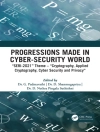An Advanced Research Workshop (ARW) “Data Fusion Technologies for Harbour Protection” was held in Tallinn, Estonia 27 June–1 July, 2005. This workshop was organized by request of the NATO Security Through Science Programme and the Defence Investment Division. An ARW is one of many types of funded group support mechanisms established by the NATO Science Committee to contribute to the critical assessment of existing knowledge on new important topics, to identify directions for future research, and to promote close working relationships between scientists from different countries and with different professional experiences. The NATO Science Committee was approved at a meeting of the Heads of Government of the Alliance in December 1957, subsequent to the 1956 recommendation of “Three Wise Men” – Foreign Ministers Lange (Norway), Martino (Italy) and Pearson (Canada) on Non-Military Cooperation in NATO. The NATO Science Committee established the NATO Science Programme in 1958 to encourage and support scientific collaboration between individual scientists and to foster scientific development in its member states. In 1999, following the end of the Cold War, the Science Programme was transformed so that support is now devoted to collaboration between Partner-country and NATO-country scientists or to contributing towards research support in Partner countries. Since 2004, the Science Programme was further modified to focus exclusively on NATO Priority Research Topics (i. e. Defence Against Terrorism or Countering Other Threats to Security) and also preferably on a Partner country priority area.
Table of Content
Preface. Acknowledgements. CEP & Transport PB&Cs; A. Jacuch.- Implementation of the ISPS Code in Norwegian Ports; E.Orbeck.- Practical Implementation of the ISPS Code in the French Seaports; B. Delsupexhe.- PBIST and its Projects, with focus on Port Security; R. Bertini.- Implementation of the ISPS Code in the Russian Federation: Ships and Ports; S. Novikov.- Steps to Better Waterside Port and Harbor Security: The Development of Regional Maritime Safety Systems in the Russian Federation; S. Novikov.- Police National Maritime Security Strategy; J. Douglass.- Harbour Protection in the Jordanian Port of Aqaba; B. Kakish.- Feasibility Study on Surveillance and Interdiction Technologies for the Port of Halifax; F. Desharnais et al.- Maritime Surveillance Information Availability in Estonia; R. Haavel et al.- Case Study: The Reality of DF Technology Transition for Maritime Domain Awareness with a focus on Container Security; M. Moskal.- Qineti Q Technology for Harbour Protection; B. Borrowdale.- Emerging Sensor Technologies and Metrics for Harbour Security;R. Woodward.- Low Power Modular Sonar Systems; M. Rüütel.- An Unconstrained View of the Employment and Exploitation of Defence Data Fusion Technologies for Harbour Protection; 1. Llinas.- An Approach to Threat Assessment; A. N. Steinberg.- Harbour Protection and Higher Level Fusion: Issues and Approaches; G. L. Rogova.- Perceptual Reasoning Managed Situation Assessment for Harbour Protection; I. Kadar.- Understanding Military Information Processing — An Approach to Support Intelligence in Defence and Security; J. Bierman.- Applying Decision Support and Data/Information Fusion/Management Concepts for Emergency Response in the Context of Harbour Protection; É. Bossé, J. Roy.- Analyses of the Concept of Trust in Information Fusion and Situation Assessment; H.Atoyan, E. Shahbazian.- Issues with Developing Situation and Threat Assessment Capabilities; J. Couture, E. Menard.- Distributed Data Fusion and Maritime Domain Awareness for Harbour Protection; S. J. Julier, R.Mittu.- Intelligent Geo-information Systems and Harbour Protection; R. P. Sorokin.-Using Modeling and Simulation as a Framework for Testing New Solutions Devoted to Securing Global Flows of Goods and People; A. Bruzzone, Ch. Briano.- Fusion of Information from Disparate Electro-Optical Imagers for Maritime Surveillance; M. J. De Weert.- Automatic Video Survefflance of Harbour Structures; L. Snidaro et al.- Heterogeneous Sensors Data Fusion Issues for Harbour Security; S. Piva et al.- Ship Detection and Characterization Using Polarimetric SAR Data; Y. Allard.- Quick Joint Detection and Fusion Applications in Passive Surveillance Systems; P. Blanc-Benon.- The Quiet Interlude Processing System (Qu IPS) an Automated Data Fusion Capability for Littoral Environments; J. H. Wilson, A. Melkevik.- Sensor Data Processing for Tracking Underwater Threats Using Terascale Optical Core Devices;.1. Barhen, N. Imam.- A New Neural Approach for Pattern Recognition in Space Imagery; V.-E. Neagoe, A.-D. Ropot.-Concurrent Self-Organizing Maps – A Powerful Artificial Neural Tool for Biometric Technology; V.-E. Neagoe, A.-D. Ropot.-Sensor-fusion in Neural Networks; G. Palm.- Target Identification based on DSm T; A. Tchamova, J. Dezert.- Particle Filter Application to Localization; E. Kiriy.- Restrictive Estimation in Tracking Problems; A. Makshanov.- Findings of the NATO Workshop on Data Fusion Technologies for Harbour Protection; E. Shahbazian et al. Index











